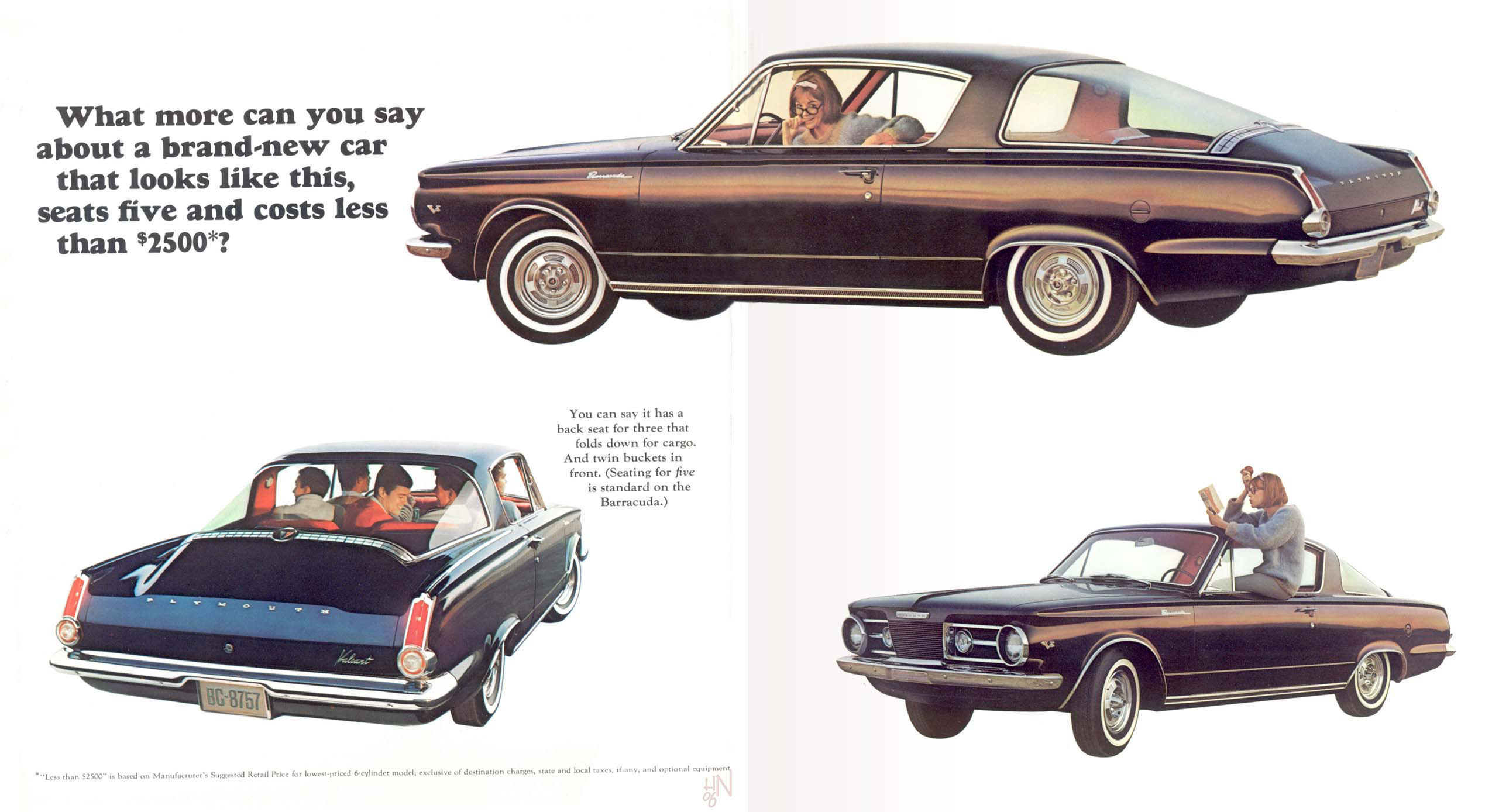Overlooked Pony: The First-Gen Plymouth Barracuda Arrived 50 Years Ago
In case you missed the public relations and marketing onslaught from Ford, April marks the 50th anniversary of the 1965 Mustang’s introduction. Meanwhile, rumors continue to point to the next Dodge Challenger morphing into a model called the SVT ’Cuda.
That last item will give Mopar fans cause to celebrate, even if it misses the 50th anniversary of the “first” sporty car in the segment, the 1964 Plymouth Barracuda.
On April 1, 1964, two weeks before America went crazy for the Mustang, Plymouth snuck a sporty compact coupe, called the Valiant Barracuda, into showrooms. In essence, the new car was really just a fastback roofline on the Valiant coupe, with an enormous wraparound rear window. The Barracuda did have quite a sporty interior, including standard bucket seats. The car’s bulbous back window covered a carpeted trunk area, which could be expanded by folding down the rear seat. But the car had a conventional trunk lid; it was not a hatchback.
The Barracuda was a clever, attractive and low-budget way to field a model in what would soon become one of the hottest segments in the industry. The Mustang easily overshadowed the sporty Plymouth, though, mainly because it looked nothing like the Falcon on which it was based. The Barracuda was clearly a variant of its economy-car parent and was even identified as such by exterior badges.
The Mustang debuted with notchback and convertible body styles and added the fastback in fall 1964. So, if you want to get picky, Plymouth’s fastback beat the Mustang fastback to showrooms.
The Mustang sprang from the gate with a much wider array of options than the Barracuda, and customers embraced the ability to personalize their cars. Mustang offered a standard six-cylinder engine and three V-8 options, with up to 271 hp. The Barracuda offered two versions of the Slant Six and the 273 cu. in. V-8 with 180 hp.
Here’s a bit of trivia that Mopar fans can use to prod their Ford friends: The first Barracuda was officially a 1964 model. Despite the label “1964½” that’s been used for the early Mustangs for so long, all were officially 1965 models. The extended model year helped give the Mustang its huge production figure for 1965.
Here’s another: Two of the early design concepts for the sporty Ford coupe, called the Allegro and Avventura, very closely resembled the production Barracuda, including a huge wraparound rear window.
Plymouth built just over 23,000 1964 Barracudas for its short debut year, but that zoomed up to 65,000 for its first full season in 1965. It’s reasonable to assume that Mustang waiting lists at Ford dealers sent some customers to Plymouth dealers, but the optional Barracuda Formula S performance package also deserves some credit. In typical Chrysler fashion, the comprehensive package combined a new 235 hp version of the 273 V-8 with a suspension upgrade, wider wheels and appearance items. Road testers praised the handling. Oddly, the package did not come with the dual exhaust system seen on most of Detroit’s performance cars.
The Formula S Barracuda proved quick and agile. Motor Trend coaxed its 4-speed test car from zero-to-60 mph in 8.0 seconds and through the quarter-mile in 16.1 seconds at 87 mph, which was similar to a Mustang with its middle V-8 upgrade.
The Valiant badges were gone for ’65, and new fish badges appeared, giving the Barracuda a stronger identity. And the automatic transmission’s pushbuttons were replaced by a floor shifter.
For ’66, the sporty Plymouth got the Valiant’s boxy restyled front end. Production fell to about 38,000 in a year when Mustang exceeded 600,000. The public had spoken. A redesigned Barracuda with no Valiant body panels was in the wings for 1967.
A first-gen Barracuda is a distinctive and fun collectible, sure to start conversations at shows and cruise nights. But they can be hard to find and are perhaps not as affordable as one might think. Hagerty’s average valuation for a 1965 Formula S is about $18,000, with top values cresting $30,000.
And the Mustang? Average value for a 1965 fastback coupe with the 200 hp V-8 is $23,700 with top values hitting $40,000.





